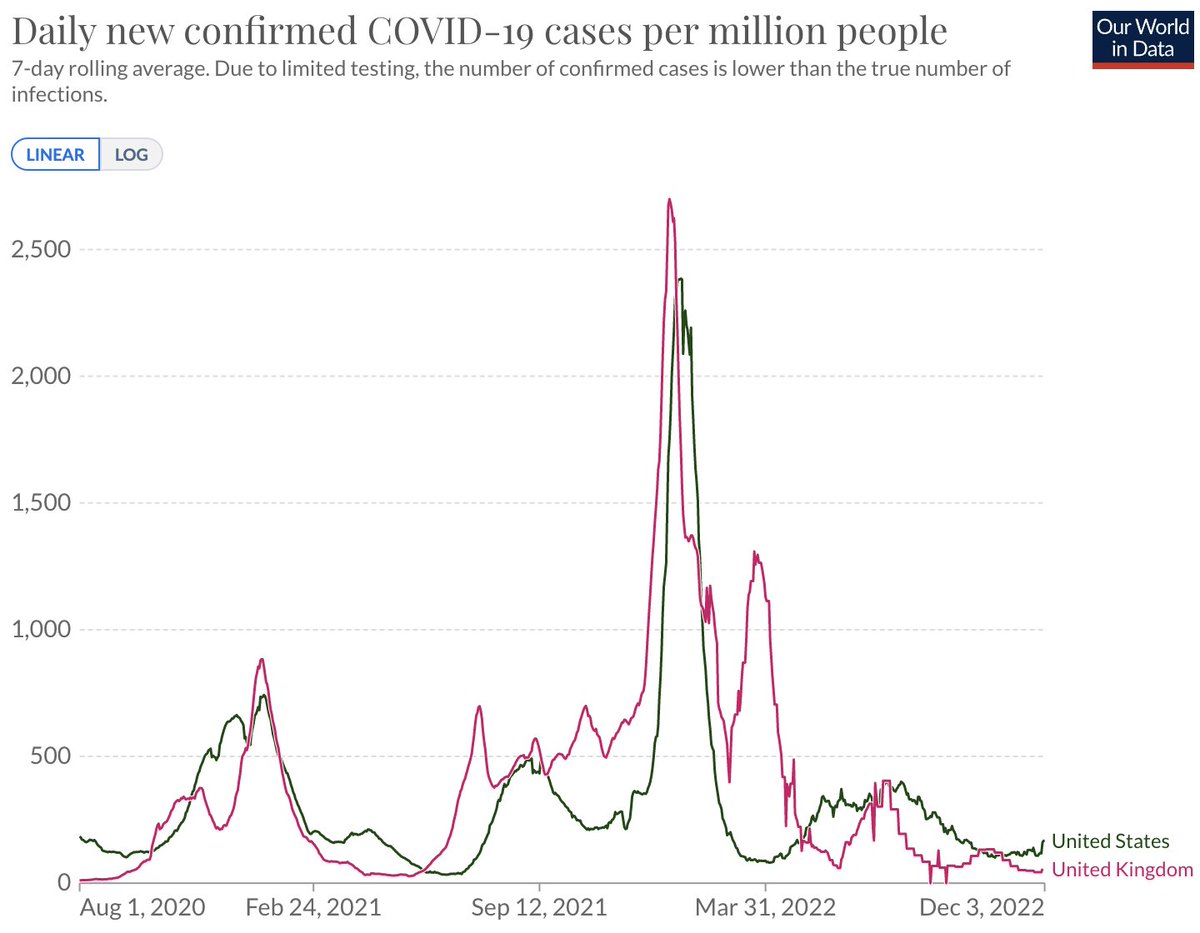After posting about sharply rising #COVID19 cases Friday, there were multiple replies to the effect of "but deaths aren't going up". As should be obvious to most at this point, (reported) deaths lag (reported) cases. This thread investigates. 1/8
https://twitter.com/trvrb/status/1324891866366537728
There is a lag between when a case is diagnosed and when the individual may succumb to their disease and there is a further lag between date of death and when the death is reported. 2/8
Here, I compare state-level data from @COVID19Tracking for cases and deaths and find that a 22-day lag maximizes state-level correlations. 3/8 

This can be seen across states where the solid lines show reported cases by date of report and dashed lines show reported deaths lagged by 22 days. You can see some detailed correspondences, especially in states experiencing the summer surge like Florida, Arizona and Texas. 4/8 

Given this 22-day lag we can compute a lag-adjusted case fatality rate (CFR) by dividing reported deaths at day t by reported cases at day t - 22. This declines from ~6% in April, averaging 1.8% after August. 5/8 

Looking backwards, this lag-adjusted CFR means that 991 deaths in the US today (with 7-day smoothing) should be compared against 57,206 cases reported Oct 19 (with 7-day smoothing). In this case, 991/57206 = 1.7% is consistent with this overall lag-adjusted CFR. 6/8
Or looking forwards, this lag-adjusted CFR suggests that 118,976 reported cases today (with 7-day smoothing) will translate to ~2150 deaths reported in 22 days on Dec 2. 7/8
I expect the US to be reporting over 2000 deaths per day in 3 weeks time. Importantly, this doesn't assume any further increases in circulation and is essentially "baked into" currently reported cases and represents conditions that take time to resolve and to be reported. 8/8
• • •
Missing some Tweet in this thread? You can try to
force a refresh












